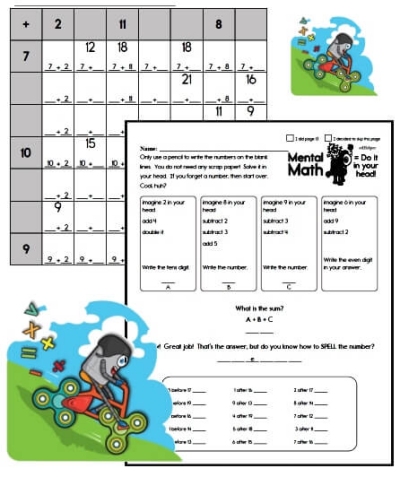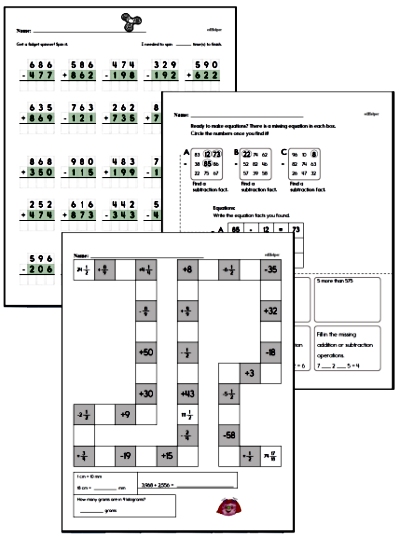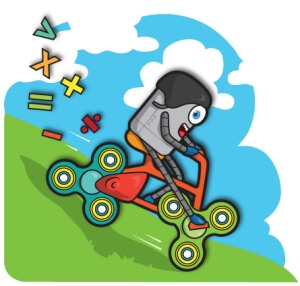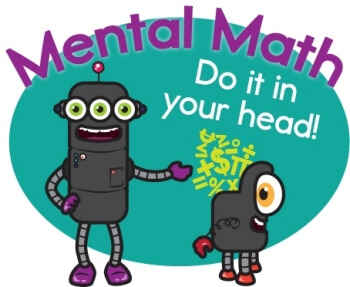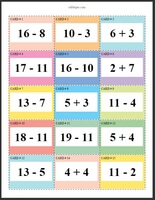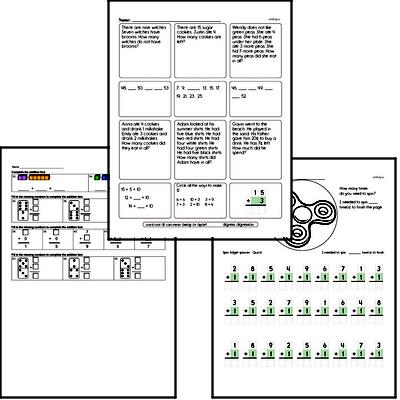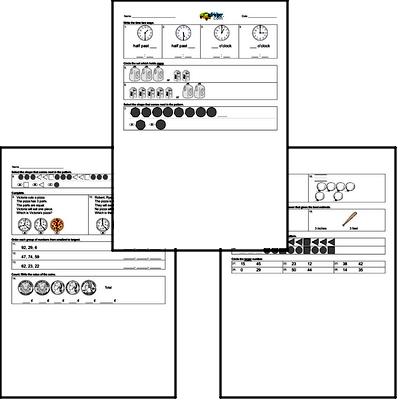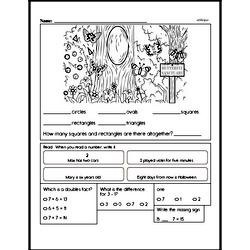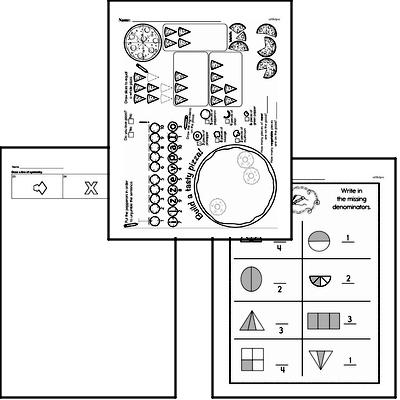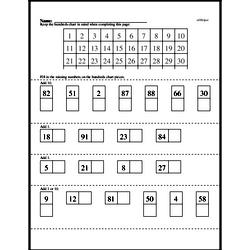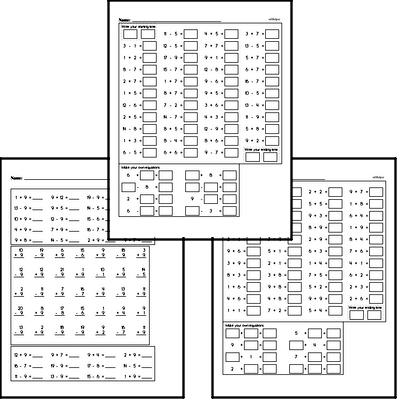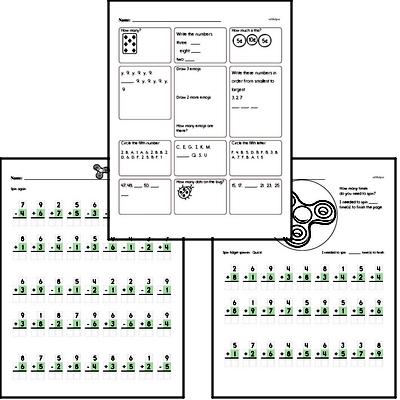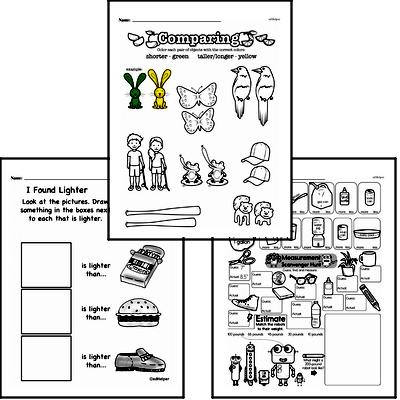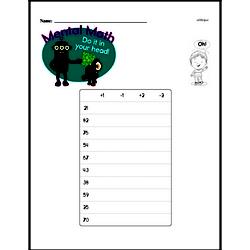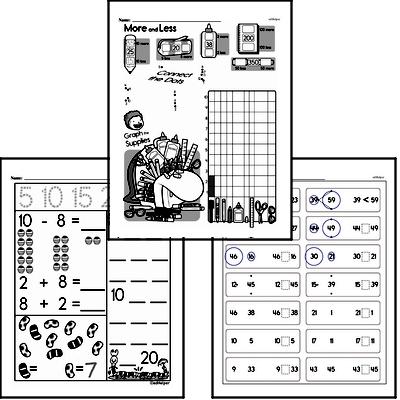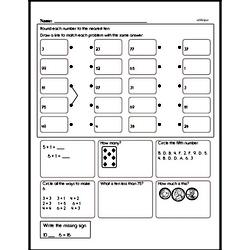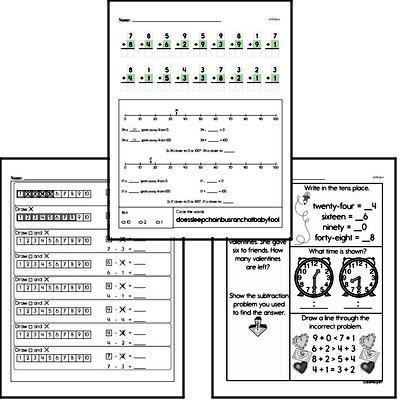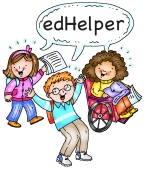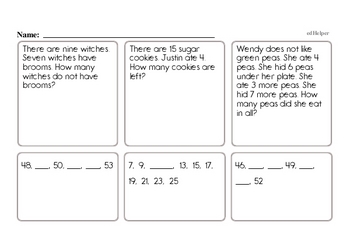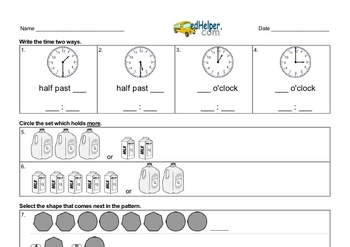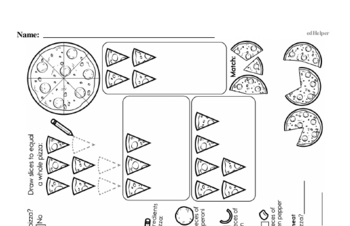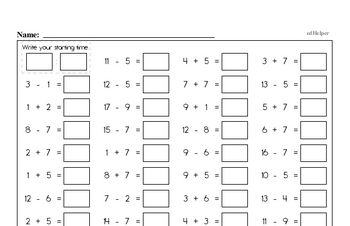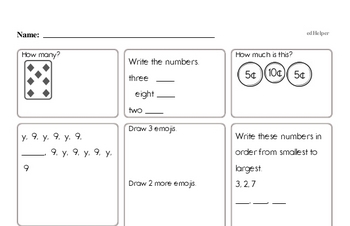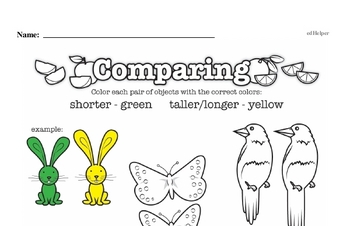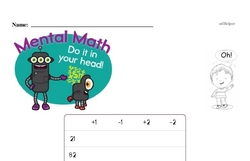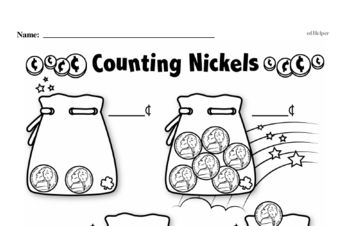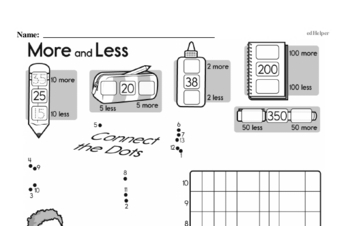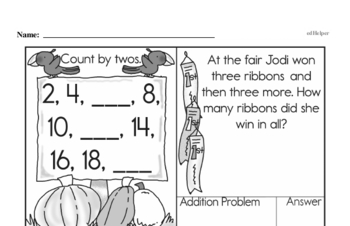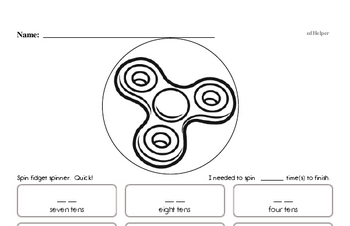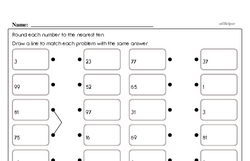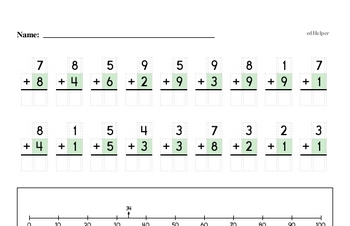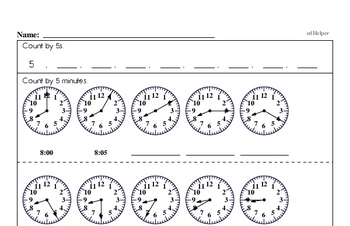Common Core and Math in First Grade
In first grade, students will focus on four areas: 1) develop understanding of addition, subtraction, and strategies for addition and subtraction within 20; (2) develop understanding of whole number relationships and place value, including grouping in tens and ones; (3) develop understanding of linear measurement and measuring lengths as repeating length units; and (4) reason about attributes of, and composing and decomposing geometric shapes.
First-grade students will count to 120 and will be able to start counting at any number (without having to start from 1). They will read and write numerals from 0-120 and represent a number of objects with a written numeral. They will understand that that the two digits of a two-digit number represent amounts of tens and ones. They will compare two two-digit numbers based on meanings of the tens and ones digits and recording the results of comparisons with the symbols >, =, and <. They will use concrete models or drawings, strategies based on place value, properties of operations, and the relationship between addition and subtraction to add and subtract within 100 and explain their reasoning. For example, they will be able to mentally find 10 more or 10 less than any given two-digit number, without having to count, and be able to explain the reasoning they used. Students will add and subtract within 20 to solve word problems. Students will be able to add from one to three whole numbers, subtract (take away from), put numbers together, take numbers apart, and compare numbers with unknowns in all positions. To do this they may use objects, drawings, and equations with a symbol to represent the unknown number. Students will use properties of operations to find unknowns. For example: If 8 + 3 = 11 is known, then 3 + 8 = 11 is also known. (Commutative property of addition.) When adding 2 + 6 + 4, the second two numbers can be added to make a ten, so 2 + 6 + 4 = 2 + 10 = 12. (Associative property of addition.) Students will be able to relate counting to addition and subtraction. Students will be able to decide if equations involving addition and subtraction are true or false. For example, 7 = 8 - 1 is true, but 4 + 1 = 5 + 2 if false. Students will be able to find the unknown numbers in equations.
Students will be able to put three objects in order by length and compare the lengths of two objects indirectly by using a third object.
Students will tell and write time in hours and half-hours using analog and digital clocks.
Students will organize, represent, and interpret data with up to three categories and ask and answer questions about the data.
They will build and draw shapes and be able to discuss their attributes and whether the attributes are defining or non-defining. For example, defining attributes of a triangle are that it is a closed figure and has three sides, and non-defining attributes might be color or size.
Students will compose two-dimensional shapes (rectangles, squares, trapezoids, triangles, half-circles, and quarter-circles) and three-dimensional shapes (cubes, right rectangular prisms, right circular cones, and right circular cylinders) to create a composite shape, and compose new shapes from the composite shape.
Students will learn fractions by partitioning circles and rectangles into two and four equal shares, describe the shares using the words halves, fourths, and quarters, and use the phrases half of, fourth of, and quarter of.
